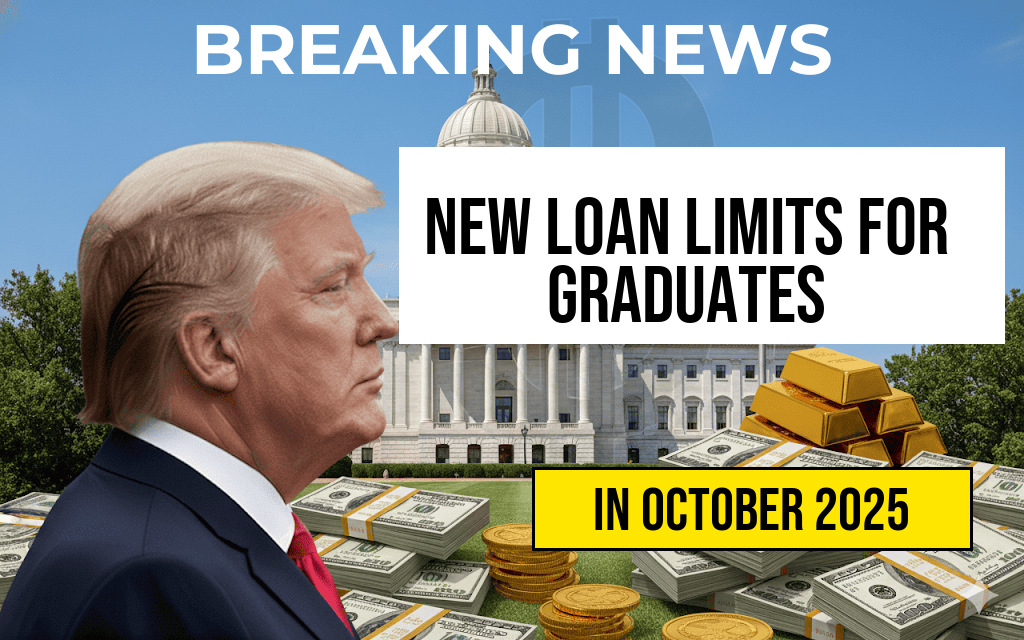Federal Loan Limits for Medical and Legal Professionals Set to Tighten Significantly by 2026
Starting in 2024, doctors and lawyers who rely on federal student loans could see their annual borrowing caps sharply reduced, with limits dropping to $50,000 per year and potentially reaching as low as $200,000 over the course of their careers by 2026. This shift marks a notable departure from current policies that allow these professionals to access higher borrowing amounts, often necessary to fund extensive education and training. The new regulations aim to address concerns about mounting student debt and the sustainability of federal lending programs, but they also raise questions about access to education for high-cost professions. The reforms are part of a broader effort by policymakers to recalibrate federal lending practices, with some experts warning that such caps could influence career choices and the financial stability of future healthcare and legal practitioners.
Background and Rationale Behind the Policy Change
Federal student loans have long played a crucial role in supporting students pursuing graduate degrees, especially in fields requiring prolonged and costly training like medicine and law. Currently, these professionals can borrow upwards of several hundred thousand dollars throughout their education. However, rising levels of student debt and concerns over the government’s financial exposure prompted lawmakers to reconsider lending limits.
According to the Department of Education, the new limits are intended to promote responsible borrowing and reduce the risk of excessive debt burdens for professionals who often face high post-graduation income thresholds. Officials argue that capping annual and total borrowing will encourage students to explore alternative funding sources and emphasize financial literacy. Nevertheless, critics contend that such restrictions may inhibit access to essential education, especially for students from underrepresented backgrounds or those attending costly private institutions.
Details of the New Loan Limits
The proposed changes, which are expected to be implemented through upcoming federal regulation updates, include:
- An annual borrowing cap of $50,000 for medical and legal students beginning in 2024.
- A cumulative borrowing limit of $200,000 by 2026, replacing the current higher ceiling that can extend well beyond this figure.
- Additional restrictions could apply to specific loan types, such as Grad PLUS loans, with potential reductions in eligibility or borrowing limits over time.
Implications for Medical and Legal Education
For many prospective physicians and attorneys, the new caps could significantly alter their financing strategies. Currently, many rely on federal loans to cover tuition, living expenses, and associated costs during their years of study. With limits in place, students may need to seek alternative funding sources, such as private loans, scholarships, or family support, which could be less accessible or more expensive.
| Year | Maximum Annual Loan Limit | Maximum Total Borrowing Cap |
|---|---|---|
| 2023 (current) | Variable, often exceeding $100,000 | Unlimited or high six figures depending on program |
| 2024 (proposed) | $50,000 | $200,000 by 2026 |
Potential Consequences and Industry Response
The policy shift has sparked debate among industry stakeholders. Medical associations and legal organizations express concern that the caps could discourage some students from pursuing these demanding professions, especially those from economically disadvantaged backgrounds. They argue that limiting access to federal funding might reduce diversity within these fields and hinder workforce development.
On the other hand, advocates for responsible lending highlight the need to prevent unsustainable debt levels that have burdened many graduates post-licensure. They emphasize that the new rules are designed to balance educational access with fiscal prudence, ensuring the longevity of federal loan programs.
Expert Perspectives and Future Outlook
Economists and education policy experts are closely monitoring the implementation of these limits. Some warn that the caps could influence career trajectories, pushing students toward lower-cost institutions or alternative careers. Conversely, others see this as an opportunity to foster more disciplined borrowing habits among future professionals.
For now, students planning to enter medicine or law should evaluate their funding options carefully, considering the impact of these new restrictions. As the regulations take shape, additional guidance from student financial aid offices and professional associations will likely emerge to help navigate the evolving landscape.
Further details on the policy and updates on its implementation can be found through the Department of Education’s official communications or reputable sources such as Wikipedia’s overview of student loans.
Frequently Asked Questions
What is the new federal loan limit for doctors and lawyers starting in 2024?
The new federal loan limit for doctors and lawyers will be set at $50,000 annually beginning in 2024.
Will the loan cap increase further by 2026?
Yes, there is a potential to increase the annual loan cap up to $200,000 by 2026, depending on policy updates and legislation.
Who is affected by the new loan limits?
The new limits primarily impact doctors and lawyers who rely on federal student loans for their education expenses and are subject to these caps starting in 2024.
How might the loan cap impact professional students?
The loan cap could limit the funds available for professional students, potentially affecting their ability to cover full educational costs and leading to increased reliance on alternative funding sources.
Are there any exceptions or exemptions to the loan limits?
Details on exceptions or exemptions are still pending, but it’s important for doctors and lawyers to stay informed about policy updates that could influence their loan options.










